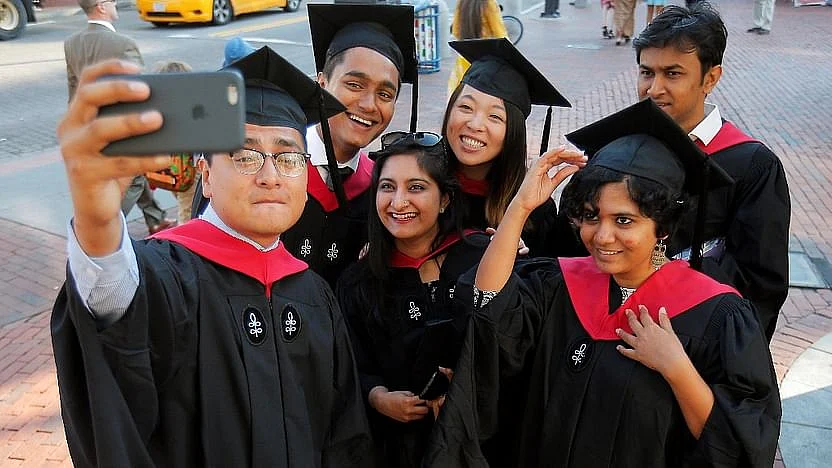Under New F-1 Visa Rules, What Can Indian Students in the US Do?
Remember, your university is your community – you applied, they accepted, and you’re in it together.

advertisement
The US Immigration and Custom Enforcement’s move to impose restrictions on foreign students holding the F-1 student visa, by not allowing them to remain in the country if all of their classes are moved online in the fall season, stands contrary to the existing public health advice. Moreover, it places subtle but substantial financial burdens on international students, and lastly, it violates the spirit of global scholarship and community that draws international students to the US in the first place.
There are many ways to manage and mitigate safety in education that do not include a step of this nature – which I fully expect to see universities acknowledging in the coming days, as they make strategies to safeguard the academic and personal development of their student bodies.
So, the big question is – what are the implications of this policy change?
Scenario 1: If Your University Is Not Offering Hybrid Learning
For students who currently hold an F-1 visa at institutions which will not be offering hybrid learning: don’t panic!
So be in touch with your university or college administrators. Tell them your concerns. Remember, your university is your community – you applied, they accepted, and you’re in it together.
If your institution cannot offer hybrid learning, you are faced with two options: either take online classes for a term at home, or, if that is not viable, apply for a gap semester or gap year.
Online learning is a reality in our post-COVID world, and universities have spent the summer honing their platforms and pedagogies.
If this is not a good option for you, check in with your university regarding deferral processes – hit pause, develop your extracurricular interests, spend time with family, and resume your higher education when things calm down.
This is a path many people around the world are considering, for personal, financial, or health-related reasons. There is nothing wrong with a gap semester and it won't be viewed negatively in any sense.
Regarding both options, be in touch with your university. Before making any decisions, ask your institution about the process to apply for a new I-20 when you are ready to resume on-campus education.
Arm yourself with knowledge, so you can make the right choices for yourself.
Scenario 2: If Your University is Offering Hybrid Learning
For students whose institutions are offering hybrid learning: again, you have two options – go back, or stay back.
This, of course, is a deeply personal choice, and one that should be taken in consultation with your family. According to this recent rule change, your F-1 visa status will not be impacted, and life will continue much as it does for non-international students.
If your university changes its education model and shifts to purely online learning, you might need to head home until the campus policy reverts back to hybrid (which should be a factor in your decision making as to whether to defer or not). If you choose to go back to campus, have fun, study hard, and abide by all safety regulations.
Scenario 3: If You Have Been Admitted to Start Course In 2020
For students who have been admitted to the US for the 2020 intake, again, you have two choices: start online, or apply for a deferral.
With current waitlists for the F-1 student visa ranging from 3-4 months, most admitted students were going to need to begin remote learning anyway, which really is just an opportunity to get acclimated to college-level work in a familiar home setting (to boost that all-important GPA!).
Headlines only tell half the story, and social media even less. The recent rule change does not kick you out of college nor necessarily alter your educational trajectory (any more than COVID has altered the world).
It is human nature to try to forecast, predict, and see patterns. But there is not enough information to make meaningful deductions about what will happen in 3 months, 6 months, or 12 months (especially in November).
(The author is Director and Co-founder of Essai Education, a Delhi-based educational organisation with a focusing on international higher education. You can reach him at info@essai.in. This is an opinion piece and the views expressed above are the author’s own. The Quint neither endorses nor is responsible for them.)